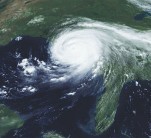Nature of Wind Effects

Each skyscraper can be treated as a unique construction facility of increased complexity. When designing and constructing such facilities one should carefully consider all the environmental factors, including wind loads. For tall buildings, in view of the importance of wind loads to their cost and safety, these analytical methods often lack the precision needed. Also, they do not account well for important wind phenomena, such as crosswind excitation, aerodynamic interactions between adjacent buildings, and aerodynamic instability, all of which affect not only loads but may also cause building motions that occupants find excessive. Tall Buildings magazine starts publishing selected chapters from the book «Wind Tunnel Testing of High- Rise Buildings», written by Peter Irwin, Roy Denoon & David Scott and devoted to the development of general principles for the wind tunnel tests in relation to the skyscrapers.
Planetary Boundary Layer and Wind Turbulence
The wind pressures acting on a tall building are very complex. While they clearly depend on the shape of the building itself, they also depend on the wind shear and turbulence caused by the roughness of the upwind terrain and the building’s aerodynamic interaction with other nearby buildings. The earth’s terrain roughness slows the wind near the ground, thus giving rise to the planetary boundary layer, within which the wind velocity increases with height (i.e., there is wind shear).
Within this boundary layer the wind is also highly turbulent. The thickness of the planetary boundary layer can vary considerably, but at high wind speeds in synoptic storms it is typically two to three kilometers. In the eye-wall of hurricanes it tends to be less, in the 500-meter to 600-meter range, but further out from the eyewall it ranges up to values similar to other large-scale storms. In localized thunderstorm gust fronts, the planetary boundary layer may only be 100 meters or so, above which the wind velocity drops off, thus making these gust fronts less critical to the overall loading of tall buildings of several hundred meters in height.
Because most of the changes in speed and turbulence in large-scale storms occur within the lowest few hundred meters, many building codes have, in the past, assumed for simplicity that above about 250 meters to 450 meters, depending on terrain, the wind speed remains constant. The impact of this approximation was minimal for buildings less than about 300 meters high, which until a few years ago was a height that was rarely exceeded. However, for establishing the wind loading on tall buildings in the 400-meter to 1,000- meter height range, which is becoming increasingly common, the full height of the planetary boundary layer in large-scale storms needs to be accounted for, and, as indicated above, it can range up to several kilometers at high wind speeds.
Full content of this issue you can read here
The full version of the article can be read in our printed issue, also you can subscribe to the web-version of the magazine
 Text: Peter Irwin, RWDI (Canada); Roy Denoon, CPP (USA);
Text: Peter Irwin, RWDI (Canada); Roy Denoon, CPP (USA);
David Scott, Laing O’Rourke (UK)
Materials are Courtesy of CTBUH


